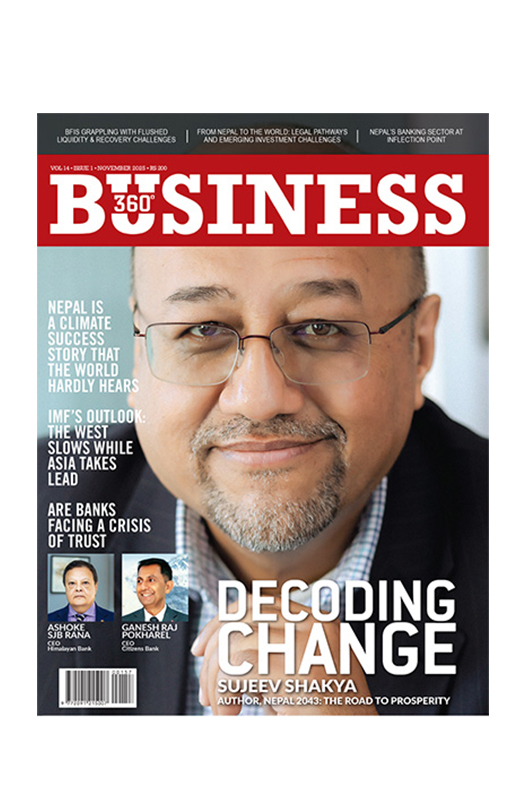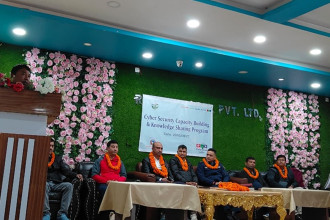KATHMANDU: Renowned thought leader and author Sujeev Shakya launched his new book, Nepal 2043 – The Road to Prosperity, published by Penguin Random House, at a launch event in Kathmandu on October 16.
The book builds on Shakya’s earlier works, Unleashing Nepal and Unleashing the Vajra, and sets out an ambitious yet realistic roadmap for Nepal to become a high‑income nation by 2043. Speaking at the launch, Shakya said, “Nepal is not a poor, landlocked country but a land-linked one with immense opportunities. The future will depend on how we connect our people, policies and possibilities. This book is not about what went wrong; it is about what can go right if we decide to act with vision and discipline.”
He added, “We have spent decades discussing our problems. It is time we start discussing solutions. Nepal 2043 is about reimagining our country as a confident player in the Asian century where optimism meets pragmatism.”
The book examines how Nepal, situated between India and China, can leverage its strategic geography, human capital, and digital transformation to drive economic growth. Divided into two sections, it looks at the broader context of Nepal’s transformation and outlines key enablers such as hydropower, agriculture, tourism and digital innovation.
Dr Danielle Meuwly, Ambassador of Switzerland to Nepal, described the book as “timely and compelling.” Reflecting on her meeting with Shakya after recent Gen‑Z protests, she said, “This book moves from vision to pragmatism; it is a rare combination of realism and optimism. Nepal 2043 does not dwell on problems; it looks for solutions. What stood out to me is how the book highlights the Swiss model of human capital development. For a federal system to truly work, the private sector must play a larger role. In Switzerland, 80% of young people choose vocational training, and Nepal can draw lessons from that.”
Dr Meuwly added that the book’s emphasis on connectivity, federalism and digital transformation “resonates strongly with Nepal’s aspirations to become a digital nation.”
Anushka Shrestha, founder of Makusse, called Nepal 2043 “realistically relevant.” She said, “After the protests, many of us asked if our hopes were misplaced. But this book reminded me that relevance does not fade; it evolves. It gives a clear overview of everything from hydropower to Brand Nepal. It is not just about what we want to be but how we can get there.” She added, “At times when we feel hopeless, we need books like these that remind us to recover, rebuild and reconnect.”
Saloni Sethia, board member of Nepal Economic Forum, spoke about Nepali resilience: “I once asked what it means to thrive in chaos. We have had numerous prime ministers, blockades, and earthquakes, yet we keep moving forward. This book captures that spirit of adaptability that defines Nepalis.”
Nepal 2043 has also drawn praise from international figures, including Helen Clark, Kishore Mahbubani and Shiv Shankar Menon, for its bold and hopeful vision of Nepal’s economic transformation. The book combines data, insight and storytelling to serve as both an analytical guide and a source of inspiration for policymakers, entrepreneurs and young readers, challenging conventional pessimism with evidence‑backed optimism and urging collective action towards an inclusive, sustainable and prosperous Nepal.






